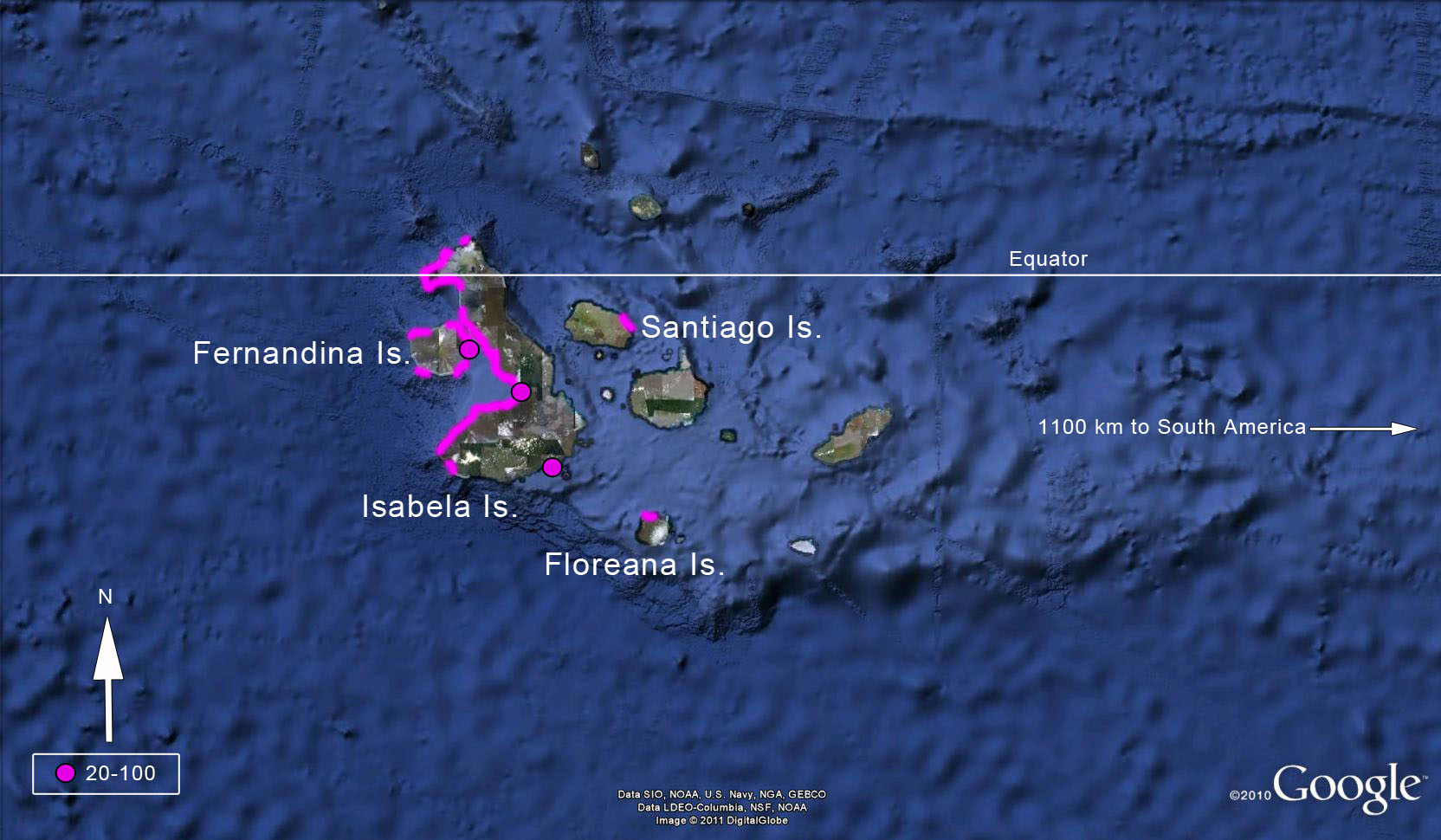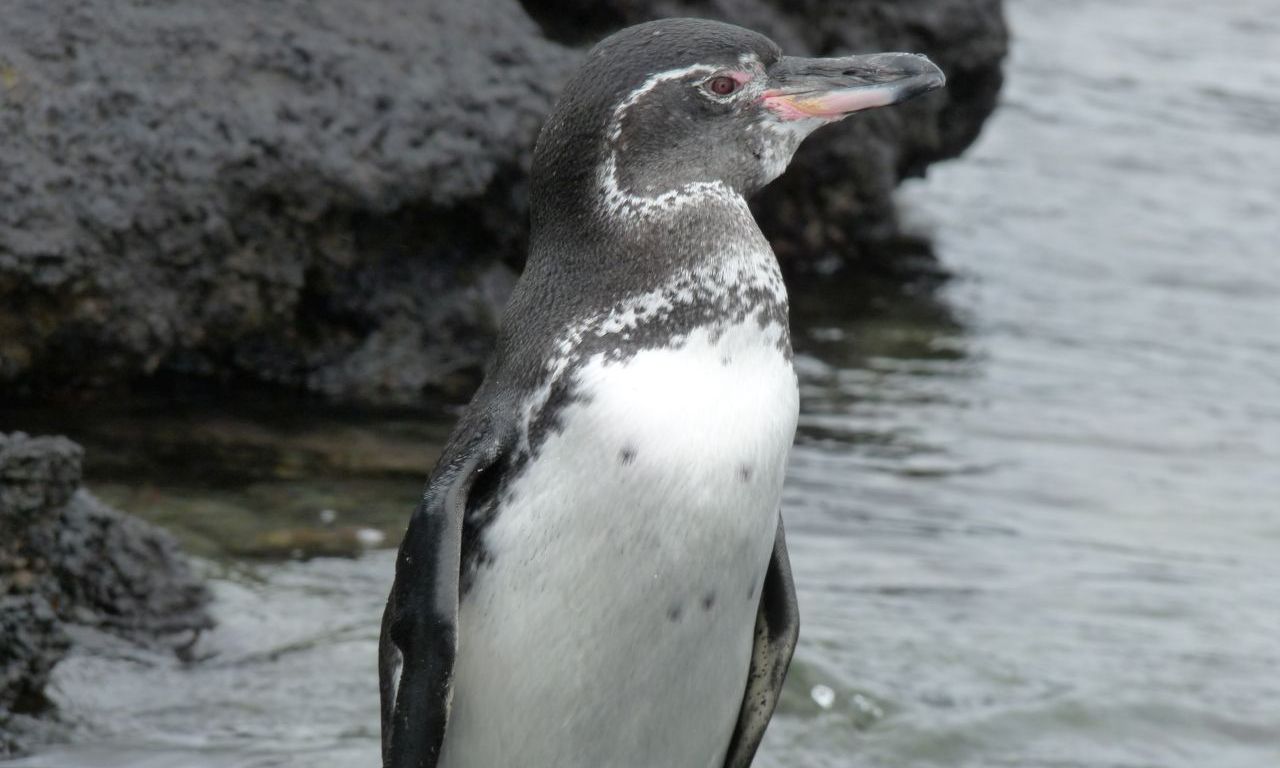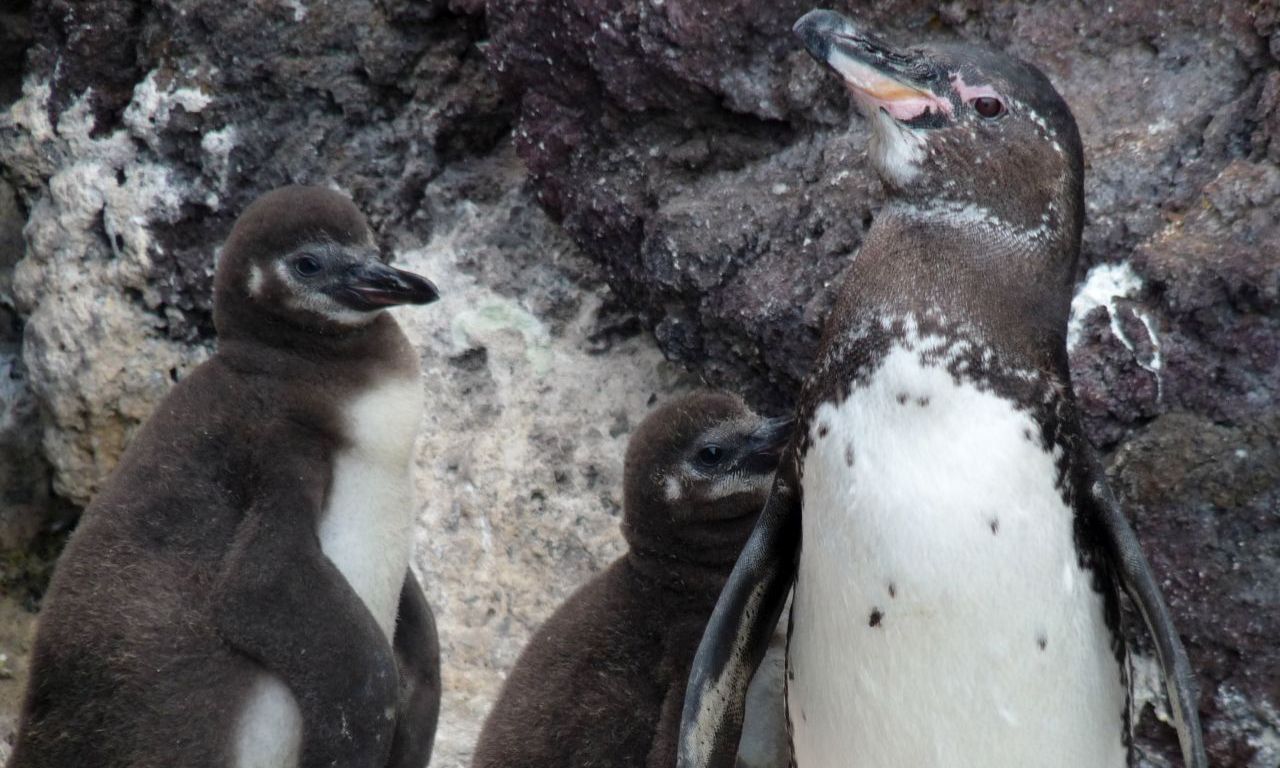Galápagos penguin - Spheniscus mendiculus
- DESCRIPTION
- A medium sized penguin (36 cm medium tall, 2 Kg weight), black with a white frontside, semi-circular white swoops extend from behind the eyes and extend around to meet under the chin. Plumage of males and females is identical. Juvenile is gray and white, with white cheek-patches which fade as the penguin matures. Chicks have light gray down. Males are generally slightly larger than females. Black bill an feet.
- DISTRIBUTION
-
Endemic to the Galápagos Islands, it lives farther north than any other penguin.

- HABITAT
- They stay in the archipelago year-round, and go search for food during the day and within a few kilometers of their breeding site. Nests are built in rocky shores, using materials such as pebbles and twigs, usually in caves and crevices, protected from direct sunlight to avoid overheating.
- BREEDING BIOLOGY
- Mating can take place at any time of the year, and is limited by food supply or molting requirements. Incubation of one or two eggs takes 38-42 days, with both parents helping out. Chick rearing period is around 60 days. First breeding at 4 years old.
- FEEDING
- They feed mainly on small fishes.
- REPRODUCTIVE POPULATION
- 750/2,300 pairs
- Conservation status (IUCN) and threats
- “Endangered” (IUCN Red List 2018). Catastrophic declines in Galapagos penguin populations occurred mainy due to severe El Niño cycles and introduced predators. The increasing severity of El Niño cycles (believed to be caused by global warming) is the most serious threat to this species, because a particularly severe cycle could result in extinction of Galapagos penguins. Habitat degradation presumed egg and chick collection, potential competition and incidental mortality in fisheries, introduced mammalian predators, and oil pollution are other threats.
- SOURCE
- Boersma, P.D, Steinfurth,A., Merlen, G., Jimenez-Uzcátegui, G, Vargas, F.H. and Parker, P.G. 2013. Galápagos Penguin, Spheniscus mendiculus. In PENGUINS: NATURAL HISTORY AND CONSERVATION (García Borboroglu, P.G. and Boersma, P.D. eds.) UW Press, Seattle U.S.A. 328 pp.


